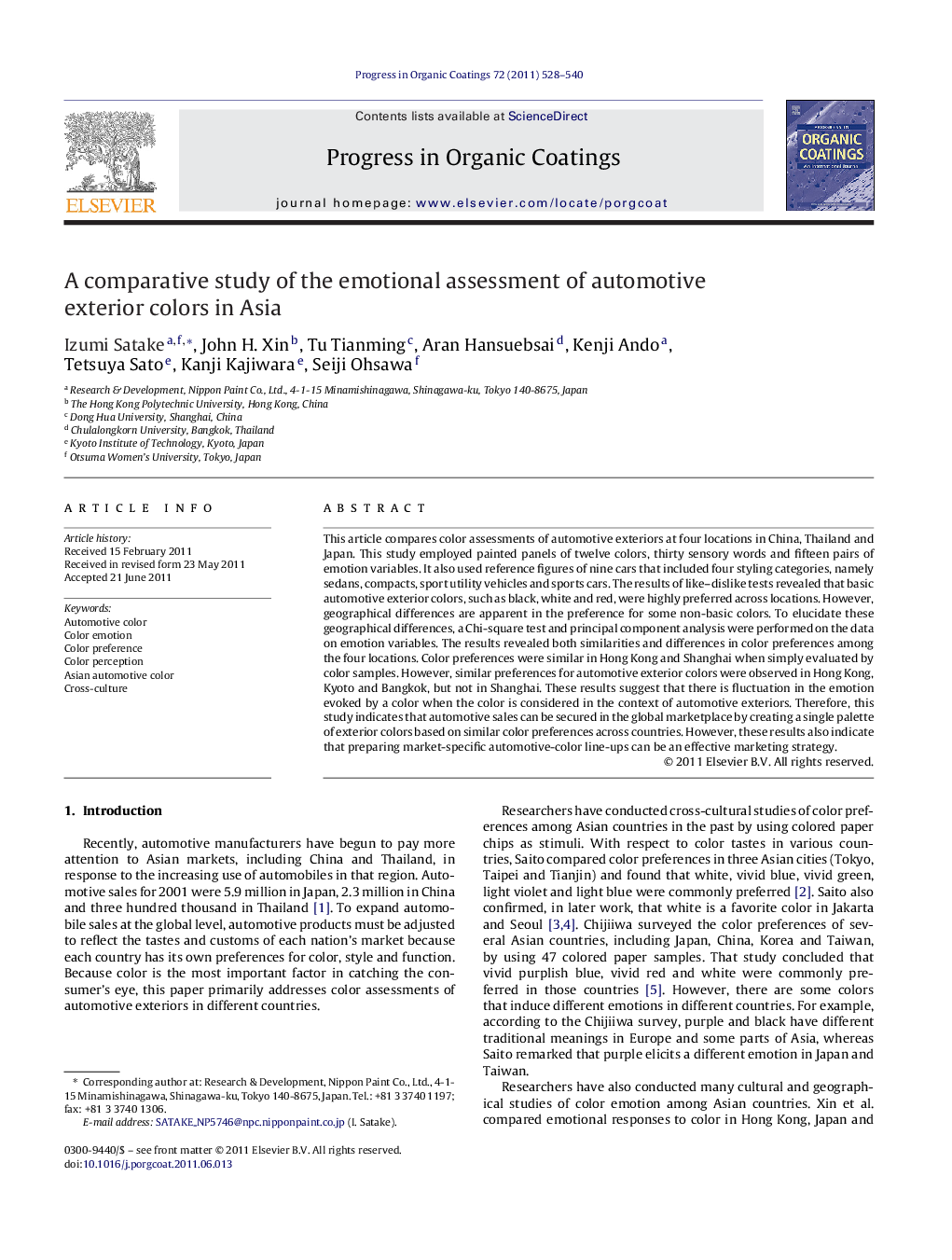| Article ID | Journal | Published Year | Pages | File Type |
|---|---|---|---|---|
| 692855 | Progress in Organic Coatings | 2011 | 13 Pages |
This article compares color assessments of automotive exteriors at four locations in China, Thailand and Japan. This study employed painted panels of twelve colors, thirty sensory words and fifteen pairs of emotion variables. It also used reference figures of nine cars that included four styling categories, namely sedans, compacts, sport utility vehicles and sports cars. The results of like–dislike tests revealed that basic automotive exterior colors, such as black, white and red, were highly preferred across locations. However, geographical differences are apparent in the preference for some non-basic colors. To elucidate these geographical differences, a Chi-square test and principal component analysis were performed on the data on emotion variables. The results revealed both similarities and differences in color preferences among the four locations. Color preferences were similar in Hong Kong and Shanghai when simply evaluated by color samples. However, similar preferences for automotive exterior colors were observed in Hong Kong, Kyoto and Bangkok, but not in Shanghai. These results suggest that there is fluctuation in the emotion evoked by a color when the color is considered in the context of automotive exteriors. Therefore, this study indicates that automotive sales can be secured in the global marketplace by creating a single palette of exterior colors based on similar color preferences across countries. However, these results also indicate that preparing market-specific automotive-color line-ups can be an effective marketing strategy.
► We compared color assessments of automotive exteriors in China, Thailand and Japan. ► We employed painted panels, emotion variables and reference figures of cars. ► The results revealed both similarities and differences among the locations. ► There is fluctuation in the color emotion in the context of automotive exteriors.
